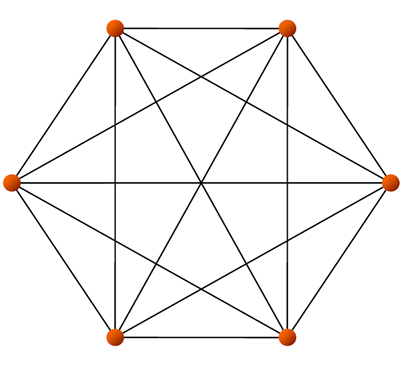Joint Architecture Standard Overview Profile
Fully Connected
Domain(s)
Space
System(s)
Satellite
Profile(s)
CH, COMM, EXP, PS, RP, SMAC
Fully connected networks are constructed by wiring every node to every other node present in the network (see Figure). For obvious reasons, these networks are the ideal topology when considering overall speed, diameter, routing complexities, reliability, and ease of construction. However, they require a massive number of links; hence, cost and power consumption are very high. Also, the port count at each node is large, equal to n-1. Thus, this topology is generally only good for low node counts.

Fully Connected Network for n=6
- Advantages: Lowest latency, diameter, and average path length. Best possible reliability, easy to construct, and easy routing algorithm.
- Disadvantages: Enormous link and port count. Cost and power requirements are very high. May require excessive wiring, which can introduce physical layer challenges. Requires n(n ?1)/2 ~ n^2 links, and n-1 ports per node.